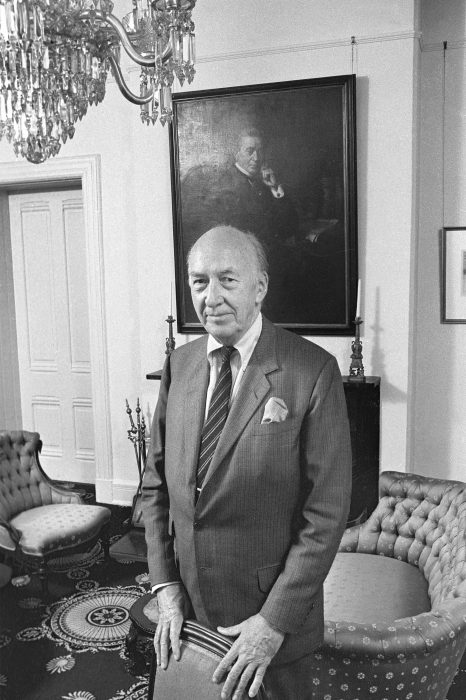What it takes to lead the Smithsonian
Secretary Bunch looks his predecessors for inspiration.

In 1978, during graduate school, I headed down to the National Mall to talk to a man about a job at the National Air and Space Museum. I walked into the office of S. Dillon Ripley knowing very little about the museum world, sporting casual jeans, an afro and my favorite army officer jacket with a “Sgt. Pepper’s Lonely Hearts Club Band” patch on the sleeve. Imagine my surprise when I walked out of that meeting with a job offer that would change the trajectory of my career.
Decades later, I find myself thinking back to my predecessors and how their efforts—essential, transformative and even flawed—shape my understanding of the role. Ripley, the eighth Secretary, oversaw the Institution from 1964 to 1984, a period of rapid expansion at the Institution and intense social change in the nation. He led the creation of new museums, research centers, outreach programs and ventures (including Smithsonian magazine, an effort close to his heart). He took chances on those who lacked the right experience on paper (me). He imagined an accessible Smithsonian, one that used its vast repository to serve the needs of the present.
In his insistence on the Smithsonian’s contemporary relevance, Ripley followed the model set over a century earlier by the Smithsonian’s first Secretary, Joseph Henry. An eminent scientist and inventor in the early 1800s, Henry believed in the Smithsonian’s responsibility to the nation and its citizens. “The worth and importance of the Institution is to be estimated…by what it sends forth to the world,” he wrote. Henry was a visionary who enabled the vast and vital Smithsonian we know today. He was also a scientific racist who believed in the biological inferiority of Black people and barred abolitionists like Frederick Douglass from speaking at the Institution.
As the first historian in the role of Secretary, I know that the past is too complex to lionize or excoriate my predecessors. Doing this job well means acknowledging the Institution’s successes and failures and celebrating its capacity for change. Only by recognizing the ways in which this Institution and its leaders both lived up to and fell short of their own standards can we become the Smithsonian of Henry’s and Ripley’s highest aspirations: a place of accessibility, of innovation, of relevance, of richness and meaning. As we reflect on 175 years of history, our great strength is our willingness to engage fully with our past, build on our achievements and evolve to meet the lofty goals we have always set for ourselves.
This post by Secretary Lonnie Bunch was originally published in the October 2021 issue of Smithsonian magazine. Copyright 2021 Smithsonian Institution. Reprinted with permission from Smithsonian Enterprises. All rights reserved. Reproduction in any medium is strictly prohibited without permission from Smithsonian Institution.
Posted: 1 October 2021
- Categories:







